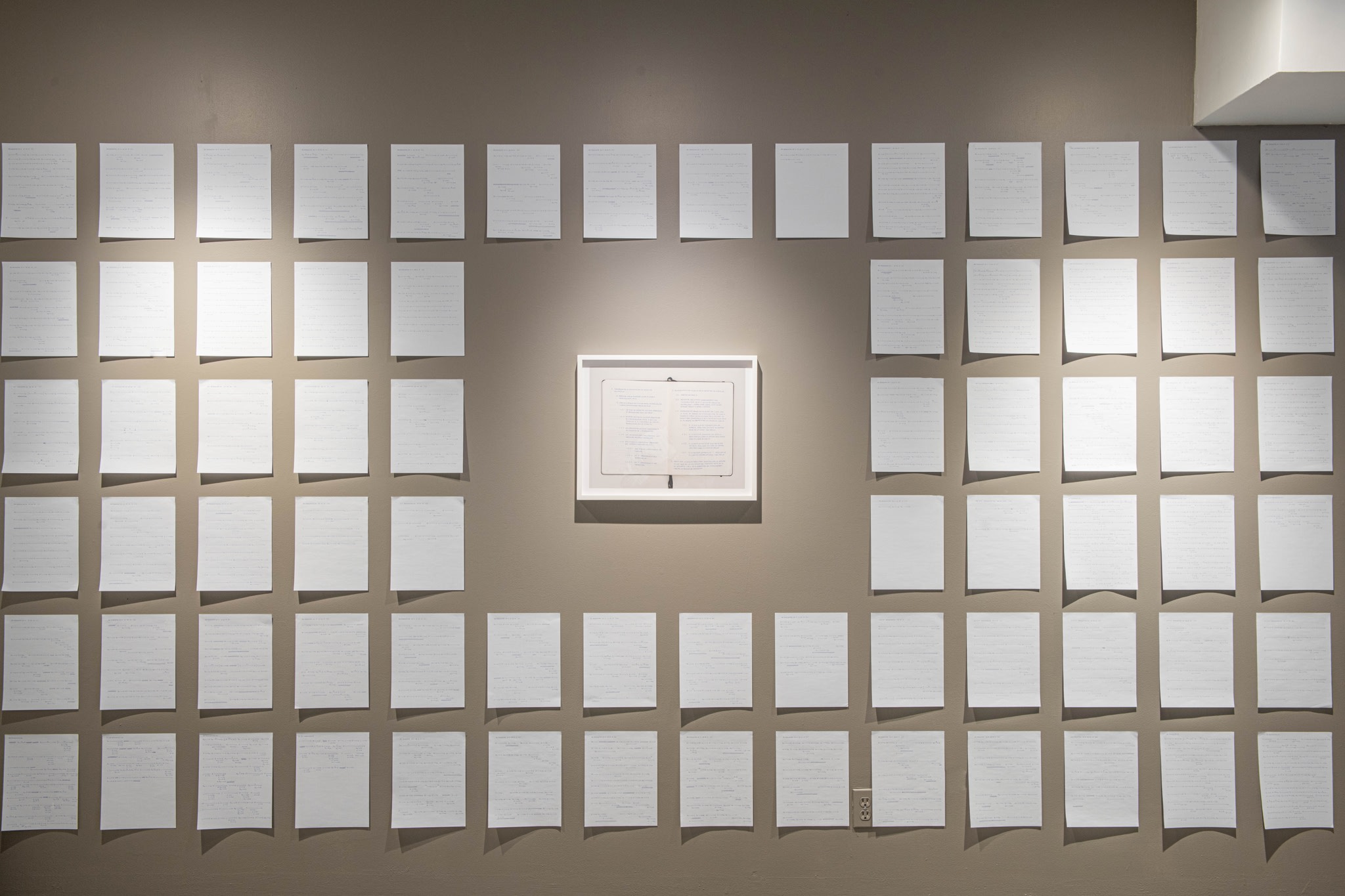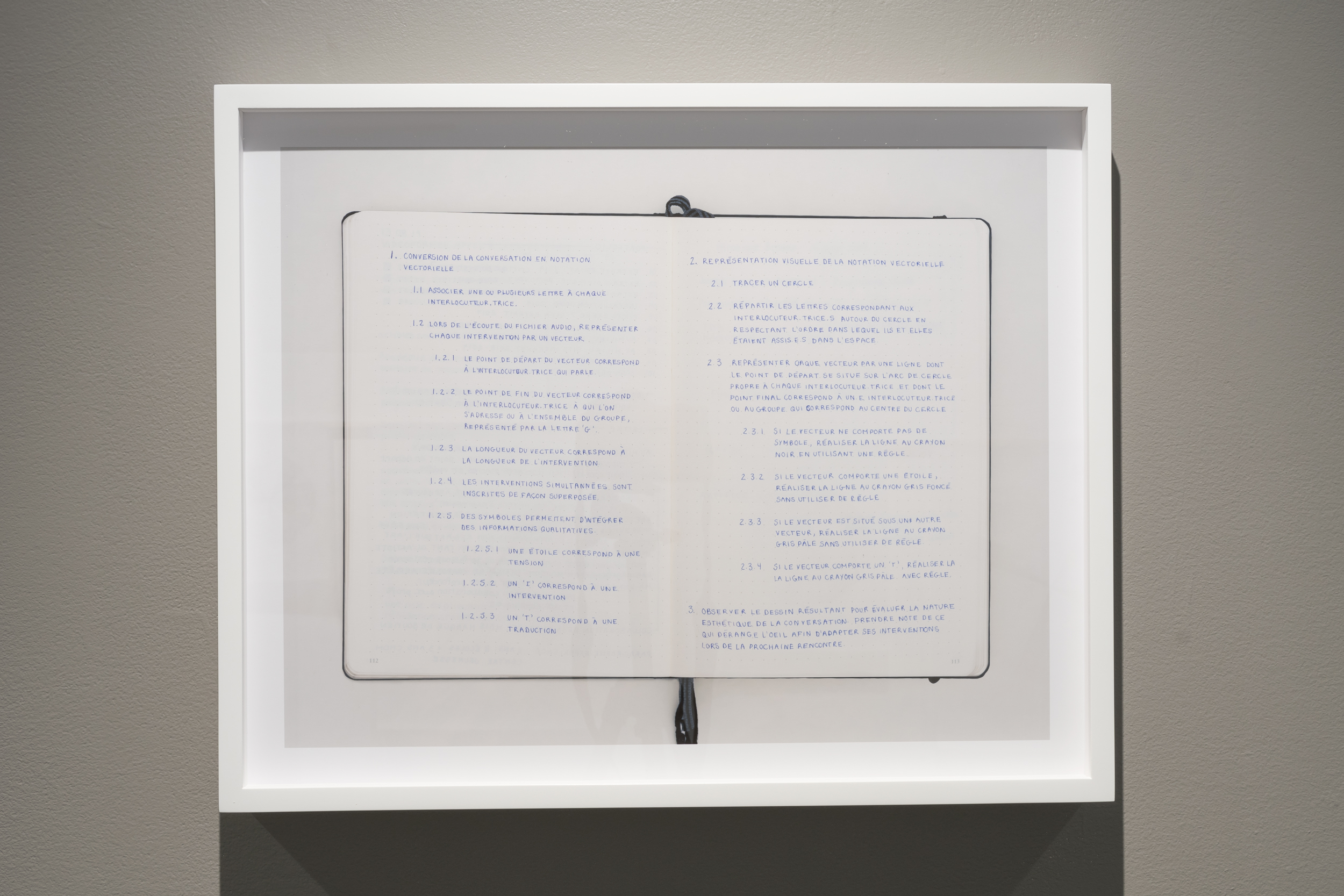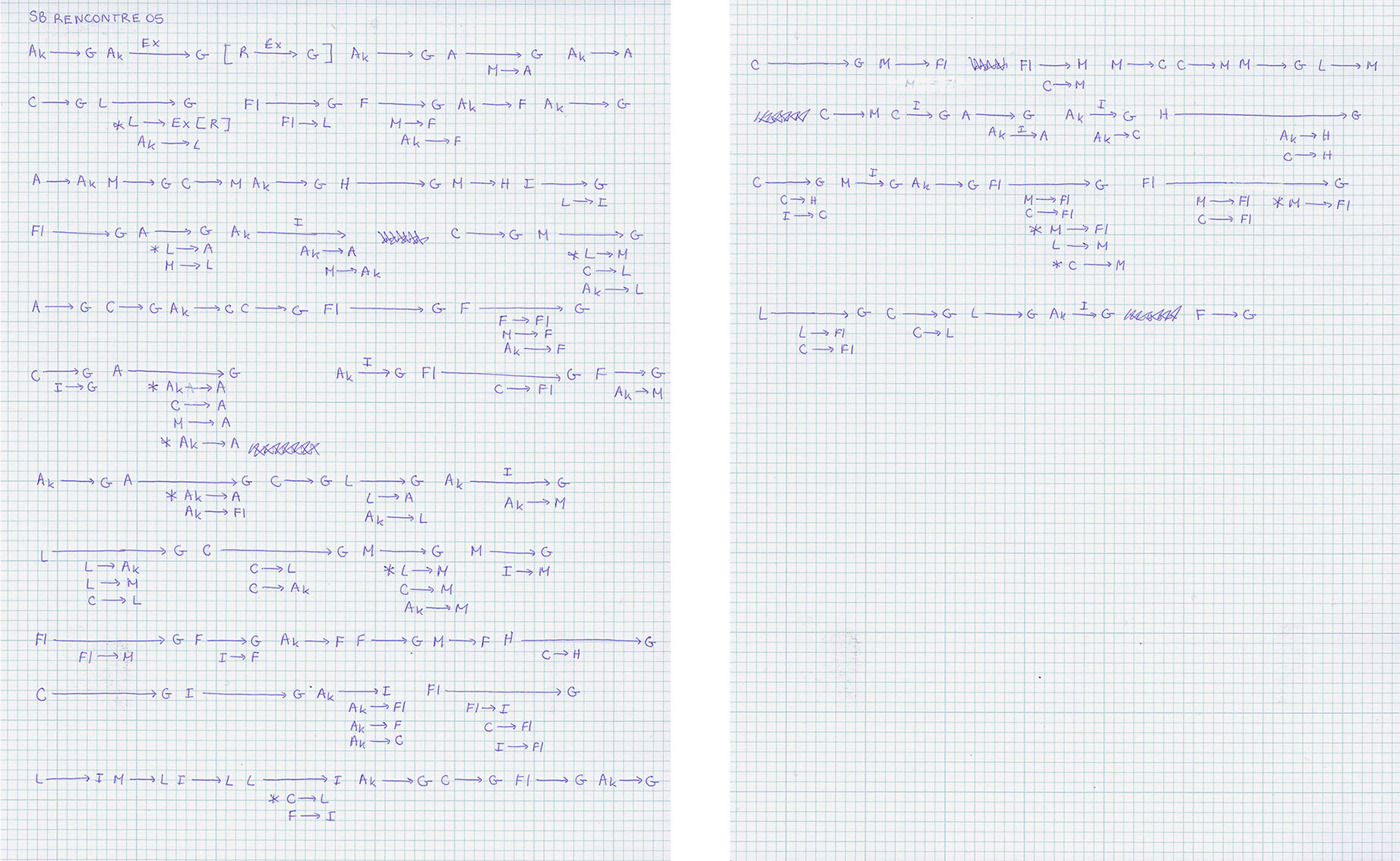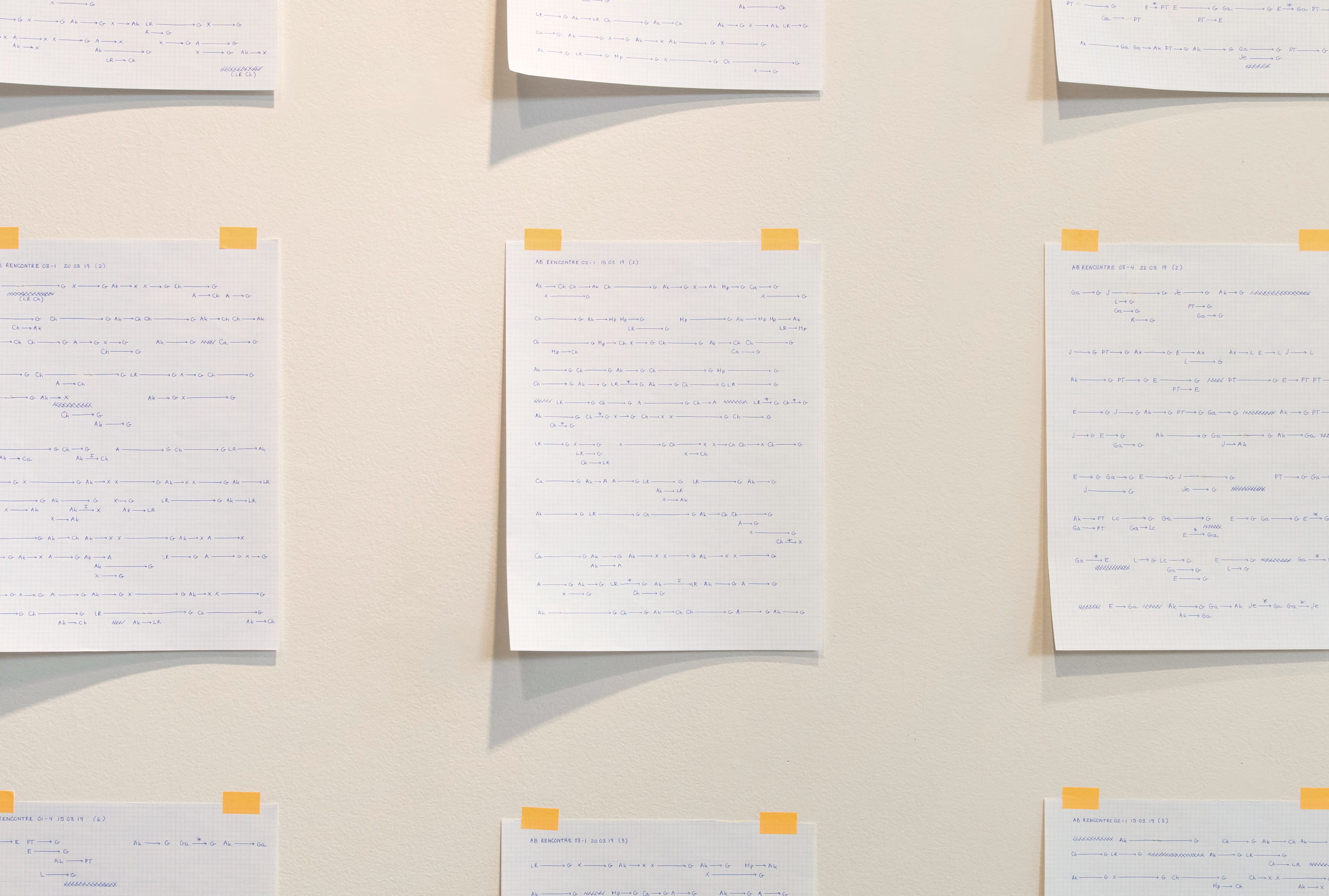AU MILIEU DES BUREAUX EMPILÉS (In Between Desks): SHEETS OF CODE
2019 - ongoing
Sheets of code. Ink on graph paper.
I believe that performative conversations, as opposed to everyday conversations, hold particular potential for social change. Addressing collective issues, interlocutors exchange about new ways of being together while simultaneously embodying these ideas through their interactions.
Performative conversations arise when all interlocutors consent to suspend their own individual subjectivity to perceive the presence of a common sense. Only then can a dynamic equilibrium arises: everyone oscillating between tension and communion. It is through this game of back and forth that we can familiarize ourselves with togetherness and what it might truly imply: being permeable to the other while maintaining our own integrity.
Performative conversations hold their power from their structure’s ability to relentlessly evolve, so developing a fixed definition of the nature of these conversations would either disrupt them or revoke their potential. Therefore, I resort to drawing as a way to investigate the structure of a conversation while respecting its indeterminateness.
Each drawing is made using data exctracted manually and anallogically from recordings of conversations. Recordings are translated to coding sheets, every interaction becoming a vector. This code is than translated into drawings. Interlocutors are spread around the perimeter of the drawing and every interaction is represented by a line.
RELATED PROJECT
See Au milieu des bureaux empilés (In between desks)
RELATED EXHIBITIONS
See Au milieu des bureaux empilés (2021) (solo) with Vaste et Vague in Carleton-sur-Mer CA
See Au milieu des bureaux empilés (2019) (solo) with Regart Art Actuel in Lévis CA
See Arrows and Other Traps (2019) (group) with Dogo Residenz für Neue Kunst in Lichtensteig CH
RELATED ARTWORKS
See Au milieu des bureaux empilés: Drawings of conversations
See Prôner le chaos (Advocating for chaos)
See Institut pédagogique d'esthétique conversationnelle (IPEC)
->







